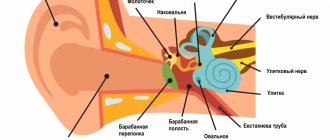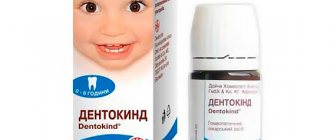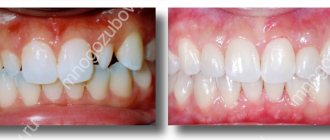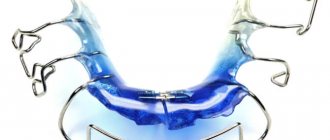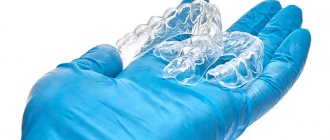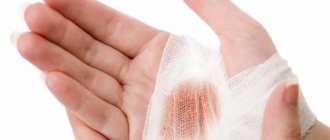Composition and type
The group of non-narcotic analgesics includes cefekon for children. The drug is produced in the form of white torpedo-shaped suppositories. This simplifies the process of using them. Some manufacturers may have a slightly creamy tint. Candles are sold in film blisters of 5 pieces. Two pieces fit into a cardboard box. Suppositories always come with instructions.
Cefekon d contains paracetamol in various quantities: 50, 100 mg, 250 mg. Thanks to this, you can choose exactly the medicine to use. An auxiliary substance that allows rectal suppositories to be given the desired shape is solid fat.
Description of the drug
Antipyretic suppositories for children Tsefekon D are produced in the form of rectal suppositories. Depending on age, the drug has different dosages (50 mg, 100 mg, 250 mg).
| Release form | Composition of Tsefekon D suppositories | Photo |
50 mg – for children 1 – 3 months.
100 mg – for children 3 months. - 3 years
250 mg – for children 3-12 years old
Paracetamol is used as the active ingredient.
An additional component is the substance vitepsol. With the help of Witepsol, suppositories for children dissolve at body temperature.
Suppositories are white. Cream shade is allowed.
In what cases should it be used?
According to the annotation for this drug, Cefekon is given to a child in the following cases:
- To reduce body temperature (for acute respiratory diseases, after vaccination, for viral diseases.
- As an anesthetic drug. Cefekon is able to eliminate pain from toothache in a child, joint pain, and headache.
- Doctors often recommend this drug to relieve pain from various injuries (including burns).
Impact
The effect of the drug is based on the properties of the active substance to provide analgesic and antipyretic effects. Paracetamol blocks a special isoenzyme - cyclooxygenase in the central nervous system, which reduces signs of inflammation and pain, and also affects the centers responsible for thermoregulation processes in the human body.
When administered rectally, the active substance is absorbed in a volume of 68-88%. In the blood, the maximum concentration is reached after approximately 2-3 hours. The analgesic effect lasts for 4-6 hours, and the child’s body temperature can be normalized for at least 6 hours.
Is it normal for babies to have a teething fever?
When teething, your baby may actually develop a fever. When a tooth moves inside the gum, its tissue is injured. The child is in pain and is nervous. And since the baby’s thermoregulation mechanisms are not yet perfect, his temperature can rise even in response to stress. Later, when baby teeth are replaced with permanent teeth, the child may also experience discomfort, but his temperature will remain normal.
However, an increase in temperature during teething may also indicate that the child is simply sick. When a baby is teething, his body experiences additional stress, so his immunity is weakened. Sometimes parents attribute a high fever to “teeth,” but at this time it is necessary to treat the viral infection.
Indications and contraindications
Cefekon suppositories for children, the instructions for use indicate this, are intended to reduce body temperature in children aged 3 months - 12 years with acute respiratory infections and other childhood infectious diseases.
The drug is also indicated for pathological conditions that are accompanied by various pain sensations of moderate intensity. It stabilizes the condition of children with headaches, dental, and muscle pain. Suppositories are prescribed for neuralgia, as well as for injuries and burns. A single use of the product is allowed once if the body temperature rises after vaccination.
Contraindication is hypersensitivity to the active ingredient. As an exception, the medicine is used up to the age of 3 months.
The decision to use rectal suppositories to reduce body temperature and reduce pain should be made by a pediatrician. The medicine is prescribed with caution when diagnosing the following pathologies:
- Disorders of the liver and kidneys.
- Congenital hyperbilirubinemia.
- Diseases of the hematopoietic system.
- Inflammation of the rectum.
Indications for use
The drug is prescribed to children as:
- antipyretic: prescribed for influenza , ARVI , post-vaccination reactions, childhood infections and other conditions that cause an increase in body temperature;
- analgesic for pain syndrome: neuralgia , myalgia , headache and toothache, pain from burns and injuries.
Terms of use
Tsefekon are candles for children. They are used rectally only as prescribed by a doctor. The drug is prescribed with special caution for up to a year. Suppositories should not be divided to obtain the required dose.
Before administration, it is necessary to cleanse the rectum with an enema. Suppositories can also be administered after the child has had a natural bowel movement. The dose is calculated individually. The age and weight of the child are taken into account.
It is allowed to use 10-15 mg of the active component of the drug per 1 kg of weight. The daily dose should not exceed 60 mg/kg. Repeated use is allowed after at least 6 hours. When deciding to take the drug against the background of impaired renal function, the time interval between taking the drug is increased to 8 hours.
Cefekon suppositories for children can be used to reduce fever for 3 days, and for pain relief – for 5 days. Extension of the period of use of the drug is possible only after consultation with a doctor. Additionally, it will be necessary to monitor blood counts.
Tsefekon D
Cefekon D is an antipyretic and analgesic agent in the form of suppositories for use in pediatrics. The administration of drugs into the rectum (rectal administration) has a number of advantages over the more common oral administration, and in some situations it is the only acceptable one (for vomiting, difficulty swallowing, the need for local therapeutic effects on the rectum and/or colon). In pediatrics, suppositories seem to be an indispensable dosage form, especially for the youngest children who have not yet learned to swallow a tablet or suspension on demand and are not old enough to receive injections. Aspects of rectal administration have been extensively studied by pharmacologists. Penetration of active substances into the circulatory system through the rectal mucosa through passive movement of the substance from an area of higher concentration to an area of lower concentration. The rectum is penetrated by an extensive network of capillaries and larger vessels, and therefore pharmacological substances are well absorbed from its surface. It is important that substances absorbed in the lower rectum do not pass through the liver and are not subject to metabolic transformations. Rectal administration of drugs protects the gastrointestinal mucosa from local irritation. The Russian pharmaceutical industry produces a number of medicines in the form of rectal suppositories, among which Cefekon D occupies a prominent place. The active ingredient of the drug, paracetamol, is very widely used in pediatrics.
The peak concentration of paracetamol in the blood is observed 1 hour after rectal administration (when taking the tablet form this happens faster - after 30-45 minutes). In infants, the bioavailability of the drug is higher than in older children. The severity of the antipyretic effect of paracetamol when administered into the rectum is the same as when administered “per os”. Cefekon D is effective for influenza, acute respiratory infections, pain syndromes of various origins (including headaches, inflammation of peripheral nerves, toothache, injuries, etc.). The drug can be used in children starting from 6 months of age. At an earlier age (1-3 months), a one-time dose of Cefekon D is possible to reduce the temperature after preventive vaccinations. Contraindication to the use of the drug is individual intolerance to paracetamol. The optimal time of administration is after bowel movement. If prompt administration of the drug is necessary, you can do a cleansing enema instead of waiting for a bowel movement. The dose is calculated depending on the patient's body weight according to the table given in the package insert. Duration of the drug course: no more than three days when using the drug as an antipyretic and no more than five days when using the drug as a non-narcotic analgesic. Exceeding the established duration of pharmacotherapy is possible only in agreement with the doctor.
Negative reactions of the body
When using the drug, negative reactions of the child’s body may occur. Most often they are expressed by malfunctions of the digestive system. This may include abdominal pain, nausea and vomiting.
In case of hypersensitivity to the active ingredient, there is a risk of allergies. It manifests itself
- Rash.
- Itching.
- Hives.
With prolonged use of suppositories, severe negative reactions of the body from the hematopoietic system are observed. Anemia occurs most often, but other pathological conditions that threaten the child’s health are also possible.
An overdose of the drug is dangerous. Its symptoms are pale skin, constant nausea that causes severe vomiting and abdominal pain. Within 12-48 hours, against the background of an overdose, signs of liver failure appear, which is life-threatening.
If you suspect an overdose, you should urgently call an ambulance. After cleansing therapeutic procedures, symptomatic treatment and strict monitoring of blood counts are prescribed.
Contraindications, side effects, overdose
Cannot be used in the following cases:
- The drug is strictly prohibited for use by young children under 1 month of age.
- Individual intolerance to active components.
- The drug is used with caution in case of low hemoglobin, neutropenia, as well as in chronic liver or kidney diseases.
Side effects
Sometimes a child develops an allergy to Cefekon suppositories, which manifests itself:
- skin itching or rash,
- redness of the anus.
Abdominal pain, vomiting and nausea are also possible. Very rarely, a child develops diarrhea from Cefekon suppositories.
Overdose
There are no official data on overdose.
Special instructions
Before using Cefekon suppositories, you must carefully study the instructions for use. It is imperative to ensure that the amount of active substance used does not exceed the permissible daily allowance in accordance with the age and weight of the child.
If minimal side effects occur during treatment with the drug, you should stop using it and inform your doctor. It is important to exclude other paracetamol-containing drugs during treatment to avoid accidental overdose.
How to dose?
The easiest way to dose Nurofen is: syrup dose (ml) = 1/2 weight (kg). This is based on a single dosage of 10 mg/kg ibuprofen.
Paracetamol is dosed at 15 mg/kg. If you dose the most popular syrup - Panadol - you can multiply the child’s weight in kg by 0.625.
A single dose can be given no more than once every 4 hours, but preferably no more than 3 times a day.
You should not use the dosage according to age, which is often placed on the packaging of drugs. This is dangerous because children of the same age weigh very differently. Correctly dose medications by weight or body surface area, but not by age.

